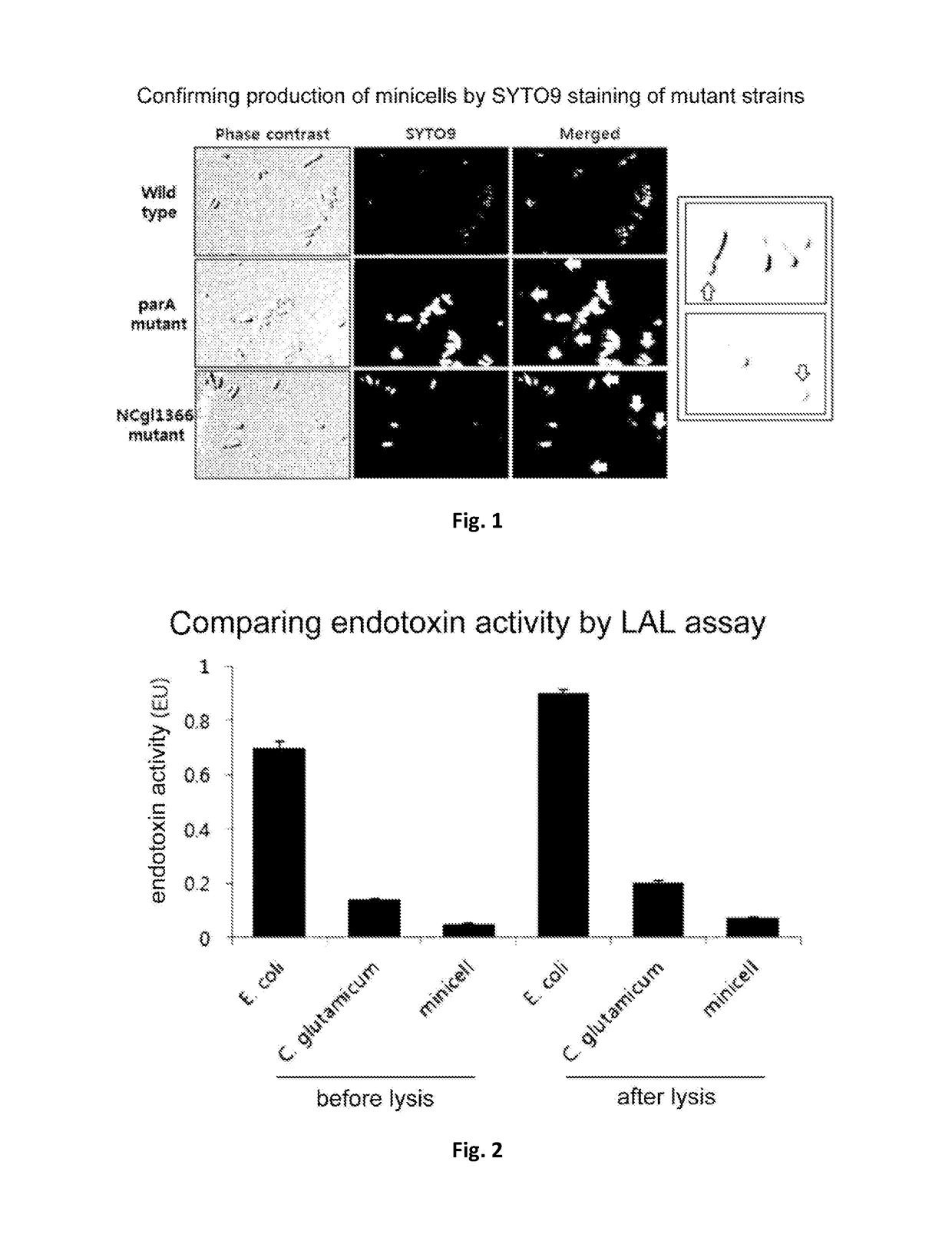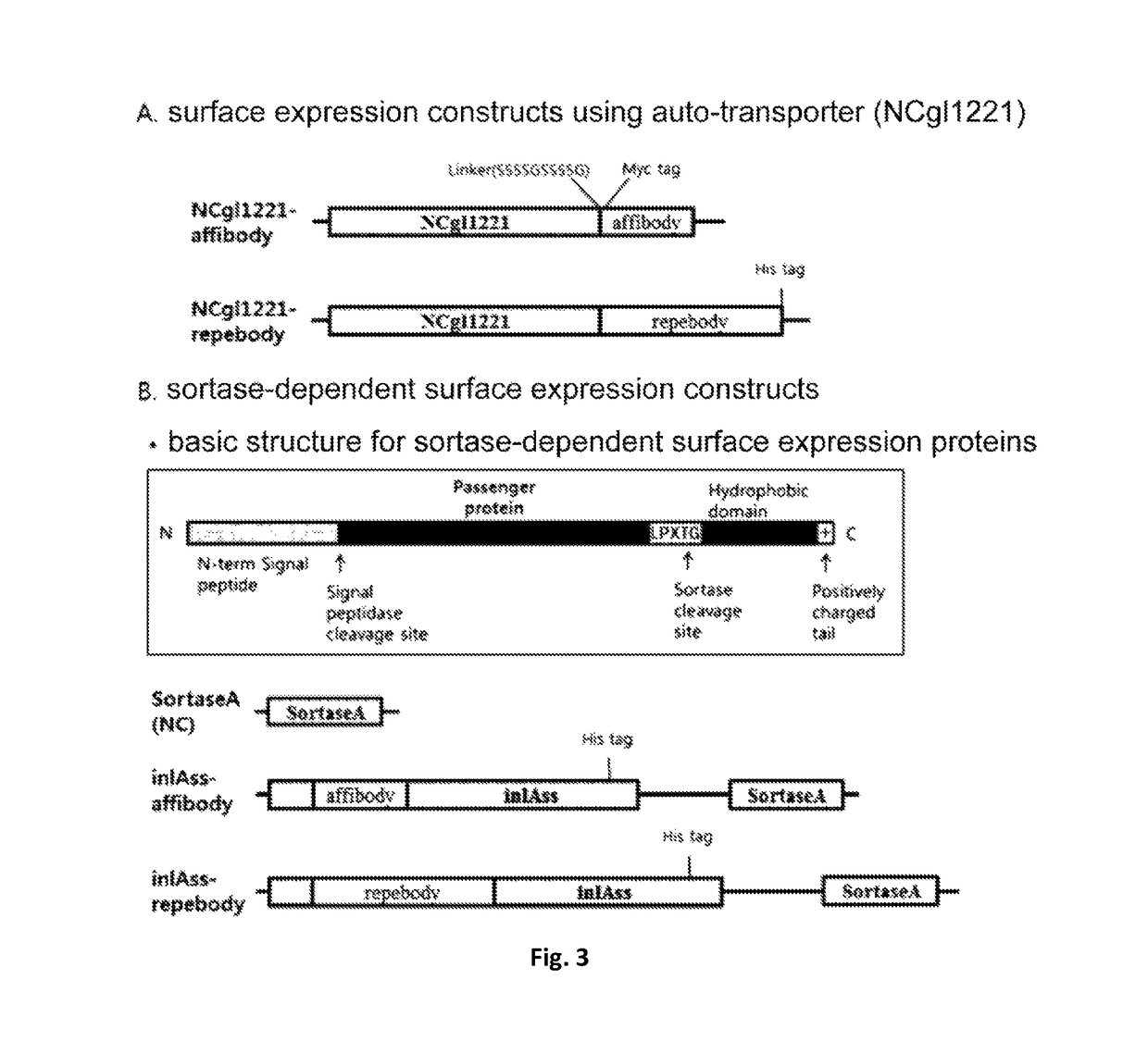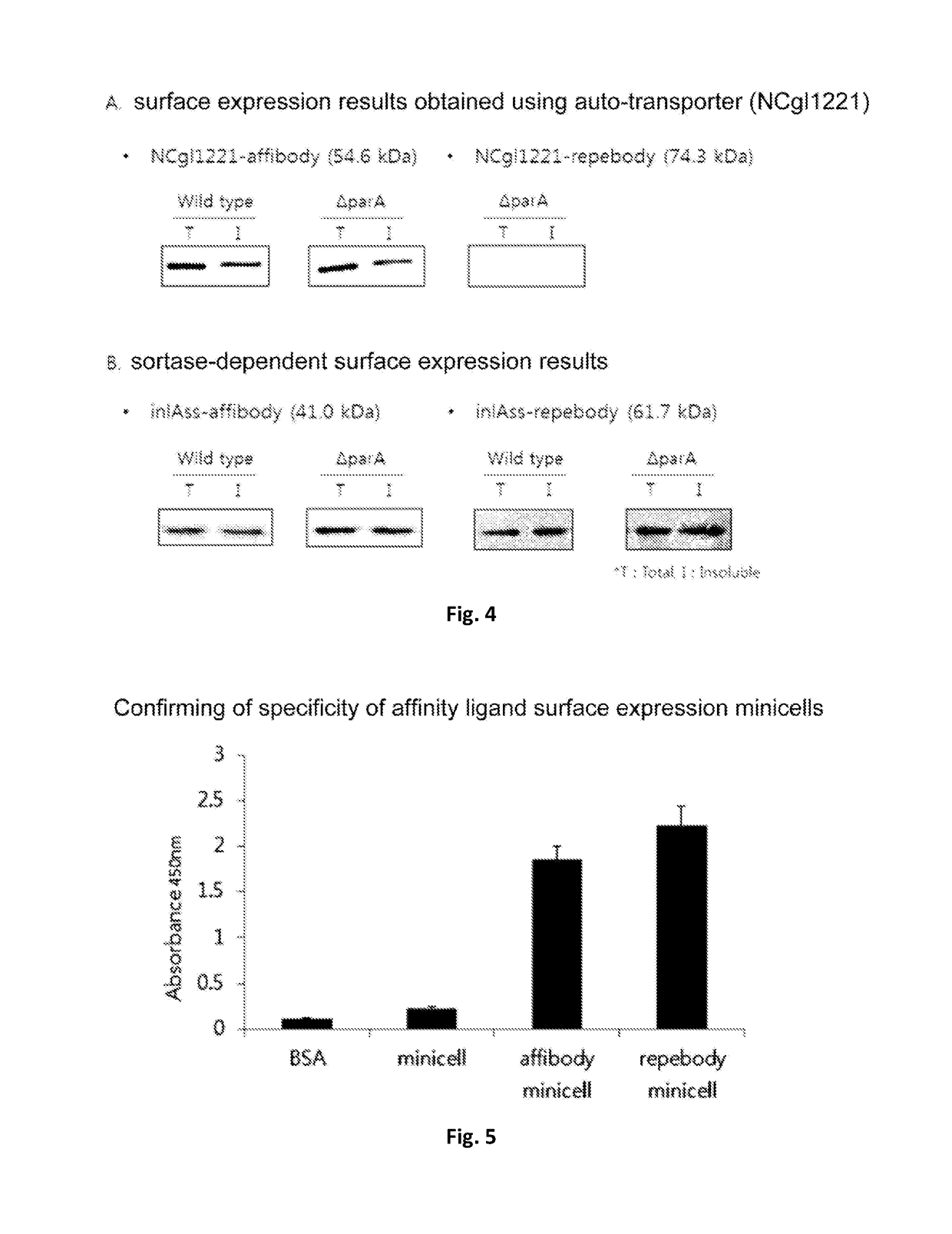Corynebacterium sp. bacteria and minicell derived therefrom, and use thereof
a technology of corynebacterium and bacteria, which is applied in the direction of bacteria based processes, human health protection, peptide/protein ingredients, etc., can solve the problems of limited use of conventional cancer treatment using radiation and anti-cancer agents, inflicting substantial burden on human bodies, and not causing the complete death of remaining cancer cells. , to achieve the effect of high safety of us
- Summary
- Abstract
- Description
- Claims
- Application Information
AI Technical Summary
Benefits of technology
Problems solved by technology
Method used
Image
Examples
example 1
Bacteria Strain, Medium and Culture Conditions
[0088]In experiments used herein, Escherichia coli (E. coli) XL1-Blue [endA1 gyrA96 (nalR) thi-1 recA1 relA1 lacglnV44 F′[::Tn10 proAB+lacIΔ(lacZ)M15] hsdR17(rK− mK+)], JM110 [rpsL thr leu thi lacY galK galT ara tonA tsx dam dcm glnV44 Δ(lac-proAB) e14− [F′ traD36 proAB+laclq lacZΔM15] hsdR17(rK−mK+)] was used as a host cell for gene cloning, and Corynebacterium glutamicum (C. glutamicum) ATCC13032 (American Type Culture Collection) was used as a host cell for manufacturing a drug delivery system. E. coli and C. glutamicum strain used herein were cultured by using Luria-Bertani (LB) media (available from Difco Company) at temperatures of 37° C. and 32° C., respectively, and during the culturing, an appropriate amount of antibiotics (Kanamycin 20 μg / ml, Chloramphenicol 10 μg / ml, Ampicillin 50 μg / ml) was added thereto, if needed.
example 2
Manufacture and Transformation of Competent Cells
[0089]E. coli (E. coli XL1-Blue, JM110) competent cells were manufactured as follows. First, cells were cultured on LB plate media, and then, a single colony was inoculated to liquid media and pre-cultured. Then, the cells were subcultured in 20 ml of MgCl2-supplemented SOB media, and cultured at a temperature of 22° C. When the value of OD 600 nm was 0.5, the cells were recovered and treated with a Inoue transformation buffer. The resultant cells were stored at a temperature of −80° C. before use. Transforming was performed according to a conventional heat shock method in which every recombinant DNA was mixed with competent cells and then placed in ice for 30 minutes, and then, heat-shocked at a temperature of 42° C. for 90 seconds, and left in ice for 2 minutes. Thereafter, after culturing at a temperature of 37° C., the cells were spread on an LB solid media including appropriate antibiotics to induce growth for about 15 to 20 hour...
example 3
Production of Minicell-Producing Strain from Corynebacterium and Separation of Minicell Therefrom
[0091]A minicell-producing strain was developed from Corynebacterium glutamicum (C. glutamicum) by inactivating genes which is related to cell division.
[0092]The searching for such a gene was confirmed by Blast P search based on an amino acid sequence of minCDE of E. coli. As a result, it was confirmed that MinD of E. coli has, respectively, identities of 22%, 24%, and 18% of parA, NCgl1366, and mrp of Corynebacterium. Even with low identities to minD, these proteins all were confirmed to be a protein associated with cell division (description; putative cell division protein, chromosome partitioning ATPase), and accordingly, an experiment for manufacturing deletion mutant strains for these genes (parA, NCgl1366, mrp) was performed.
[0093]The deleting a gene from Corynebacterium glutamicum was performed by inducing homologous recombination using a pK19mobsacB vector and selecting a mutant ...
PUM
| Property | Measurement | Unit |
|---|---|---|
| size | aaaaa | aaaaa |
| temperatures | aaaaa | aaaaa |
| temperatures | aaaaa | aaaaa |
Abstract
Description
Claims
Application Information
 Login to View More
Login to View More - R&D
- Intellectual Property
- Life Sciences
- Materials
- Tech Scout
- Unparalleled Data Quality
- Higher Quality Content
- 60% Fewer Hallucinations
Browse by: Latest US Patents, China's latest patents, Technical Efficacy Thesaurus, Application Domain, Technology Topic, Popular Technical Reports.
© 2025 PatSnap. All rights reserved.Legal|Privacy policy|Modern Slavery Act Transparency Statement|Sitemap|About US| Contact US: help@patsnap.com



